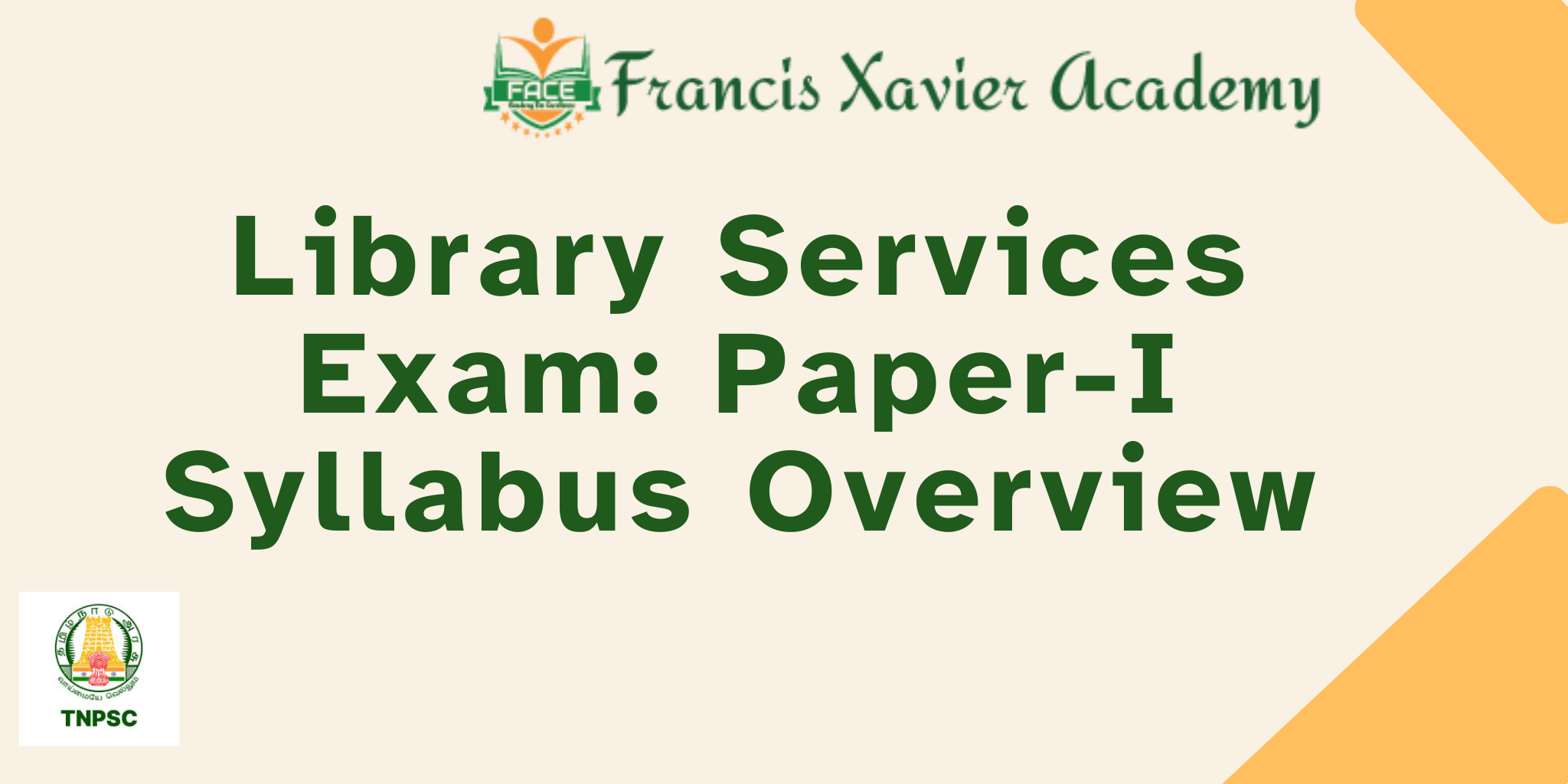
Are you gearing up for the Combined Library State/Subordinate Services Examination? If you’re aiming to conquer the Library and Information Science (B.L.I.S) Degree Standard (Objective Type) paper, understanding the Library services exam syllabus is the key to success. This exam is designed to test your knowledge and skills in various aspects of Library Science. To help you get started, we’ve broken down the syllabus into digestible sections, making your preparation journey a breeze. Let’s dive into each unit and see how you can strategically conquer this exam.
Paper-I: Library and Information Science (Degree Standard – Objective Type)
Library and Society
Libraries are more than just buildings filled with books—they are powerful social institutions. This unit explores the influence of libraries on social, political, economic, and cultural aspects, all of which you will need to understand as part of the library services exam syllabus. This unit covers:
- Library as a Social Institution – Understand how libraries impact communities and cultures.
- Types of Libraries – Learn about Public, Academic, and Special Libraries.
- Library Legislation – Dive into the Public Library Act and the Copyright Act.
- Library Associations – Explore organizations like UNESCO, IFLA, ALA, ILA, and IATLIS.
- Role of Government Agencies – Study the contributions of RRRLF and UGC-INFLIBNET.
Pro Tip: Relate each concept to real-world examples to better understand the societal impact of libraries.
Library Management
Behind every great library is efficient management. This unit covers:
- Management Concepts – Learn the fundamentals and functions (POSDCORB).
- Library Sections and Routines – Understand Acquisition, Technical, Circulation, and Reference sections.
- Human Resource Management – From recruitment to performance appraisal.
- Financial Management – Study budget types, income sources, and physical facilities.
- Library Records – Learn about maintaining statistics and generating reports.
Study Tip: Visualize management practices within an actual library to see how theory meets practice.
Information Processing (Library Classification)
Organizing information efficiently is the backbone of library science. This unit covers:
- Library Classification Concepts – Why classification matters in libraries.
- Types of Classification – General and Special classifications.
- Classification Schemes – Explore Colon, Dewey Decimal, UDC, and Library of Congress Classification.
- Facet Analysis – Learn about PMEST (Personality, Matter, Energy, Space, Time).
- Notation – Types and characteristics of library notations.
Pro Tip: Practice classification with real books to enhance your skills.
Information Processing (Library Cataloguing)
Cataloguing ensures easy access to information. This unit explores:
- Concept and Purpose of Cataloguing – Why cataloguing is essential in libraries.
- Types of Catalogues – Alphabetical, Classified, and Trade catalogues.
- Cataloguing Standards – ISBDs, Classified Catalogue Code (CCC), and AACR.
- International Standards – MARC, UNIMARC, MARC21, and Metadata.
- Subject Headings – Sears’ List and LCSH (Library of Congress Subject Headings).
Study Tip: Practice cataloguing with different cataloguing rules for a hands-on approach.
Information Sources
Libraries are treasure troves of information. This unit covers:
- ypes of Information Sources – Primary, Secondary, and Tertiary.
- Evaluation Criteria – Learn how to evaluate the reliability of information sources.
- Secondary Sources – Dictionaries, Encyclopedias, Directories, Biographical sources.
- Electronic Information Sources – Databases and full-text resources.
- Discipline-oriented Sources – PubMed, INSPEC, UGC-e-Sadhsindhu.
Pro Tip: Compare print vs. electronic sources to understand their pros and cons.
Information Services
Helping users find information is a librarian’s primary job. This unit includes:
- Types of Information Services – Ready reference, Long range, User education.
- Literature Search and Bibliography – Compilation techniques.
- Current Awareness Service (CAS) and SDI – Keeping users updated.
- Indexing and Abstracting Services – Efficient information retrieval.
- Specialized Services – Reprography and Translation.
Study Tip: Develop user scenarios to understand the application of different services.
Computer and Computer Applications
In today’s digital age, computer knowledge is crucial. This unit covers:
- Computer Basics – Definition, Characteristics, and Classification.
- Software Types – System vs. Application, Open Source vs. Proprietary.
- Database Management Systems (DBMS) – Concepts and functions.
- Library Automation – Purpose, areas, and software packages.
- Web Technology – Browsers, Search Engines, Protocols.
Pro Tip: Practice using library automation software for real-world exposure.
Resource Sharing and Networking
Libraries collaborate to enhance access to information. This unit includes:
- Resource Sharing Concepts – Definition, need, and purpose.
- Library Cooperation – Why libraries collaborate.
- Computer Networks – LAN, WAN, MAN, Internet, and Intranet.
- Library Networks – International (OCLC WorldCat) and National (INFLIBNET, DELNET).
Study Tip: Explore live examples of library networks to understand their functionality.
Information System
Organizing information efficiently requires robust systems. This unit covers:
- Concept and Characteristics – What makes a good information system.
- Types of Information Systems – International, National, and Mission-oriented.
- Examples – UNESCO, INIS, AGRIS, INSPEC, PUBMED, NISCAIR, DESIDOC.
- Library Consortia – UGC-e-SodhSindhu, N-LIST, CSIR Consortium.
- Open Access Movement – Understanding open access resources.
Pro Tip: Study international and national systems for a broader perspective.
Digital Library
Digital libraries are the future. This unit explores:
- Concept and Characteristics – What defines a digital library.
- Digital Library Management – Design, architecture, and standards.
- Digital Library Initiatives – Indian initiatives and Open Archives.
- Metadata – Standards and metadata harvesting.
- Building Digital Libraries – Digitization, software, and hardware requirements.
Study Tip: Explore digital libraries like the National Digital Library of India.
Conclusion: Prepare Smart, Succeed Fast!
The Combined Library State/Subordinate Services Examination is a gateway to a fulfilling career in Library and Information Science. With a strategic approach and thorough preparation, you can master the Library services exam syllabus and excel in the exam. Utilize the above insights to organize your study plan, and remember, consistency and practice are the keys to success.
Ready to crack the exam? Start preparing today and take the first step towards a bright future!
 Now
Now